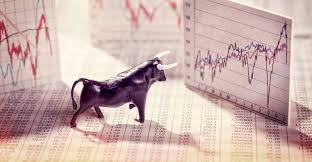The good news about cattle prices starts by looking back at the double whammy of pandemic and drought. The pandemic closed some markets, but opened some others that are helping beef demand now. And drought-parched pastures in the Great Plains and West over the past few summers brought on some hard culling of the nation’s beef cow herd.
Kevin Good of CattleFax, the respected industry market forecaster, says that 50% of the nation’s cows were in a drought zone last year, leading to a 13.5% culling rate across the industry. “That’s the highest ever,” he says.
The USDA cattle inventory report from early this year confirmed Good’s point. Beef cow numbers have hit their lowest number in six decades at less than 29 million head, down 4% in the last year alone. Slaughter numbers of finished cattle and cows will be shrinking in 2023 and beyond. (See "CattleFax Forecasts for 2023 Prices" below.)
MOST BULLISH REPORT EVER
Don Close, a market analyst who’s been watching and forecasting cattle markets for decades, has recently become the chief research officer for Terrain, a new markets analytics division of three regional Farm Credit Associations (terrainag.com). After looking at all the data, he says, “This inventory report is the most bullish that I’ve seen in my 40 years of watching cattle markets.”
Here are his top five reasons for such optimism…
- “Look at the decline in beef cow numbers,” he says. “The cattle industry’s gas tank is about empty.” Winter and early spring precipitation may have broken the drought in some places, but the lingering effects are not over, Close says.
- He also notes that there’s still a reluctance to retain heifers. “I think we’ll see some additional modest liquidation of cows in 2023, and that’s without a lot of heifers in the pipeline,” he says. “We’re looking at the end of 2024 and early 2025 to really begin to rebuild cow numbers. That’s where most of my longer term bullish sentiment comes from.”
- The demand side for beef also holds good promise. “Beef demand is absolutely solid,” Close says. “Over the last few months of high inflation, we may have seen some slow down in demand, but not much.”
- Much of that strong demand for beef is for high-quality, eat-at-home beef. This might be the silver lining to the COVID-19 pandemic. Because of restaurant closings, beef packers had to divert some of their highest quality product to grocery stores for direct sales to consumers. “What they realized is that they could get a prime restaurant meal at home,” Close says. “And they like it.”
Beef consumption last year was the highest in 12 years, at 58 pounds per person, and the retail price was record high at $7.30 per pound. That’s surging demand.
- Also on the demand side, beef exports are chugging along at a high rate. That includes our biggest beef export markets, Close says, of Japan, Mexico, Canada, and South Korea. And there’s good growth to China where they are buying increasing amounts of U.S.-produced beef rounds to slice thin for noodle bowls. Beef exports now add about $500 to the value of every finished steer.
CATTLEFAX FORECASTS FOR 2023 PRICES:
Fed cattle: $150 to $172 per hundredweight trading range, with an average of $158 for the year, up $14 from last year. Peaks will come in early summer (grilling season) and late in the year.
550-pound calves: $200 to $250 price range for the year, with an average of $225, a bump of $29 per hundredweight over last year.
Cull cows: After last year’s selloff, there probably won’t be as many culls this year, diminishing the supply of hamburger beef. Prices will jump to $100 per hundredweight for cull cows, $20 above last year.
Bred cows: As the nation’s cow herd sets to rebuild, bred cows, heifers, and cow-calf pairs will be in high demand. Good quality bred cows could range from $1,900 to $2,300 this year.














